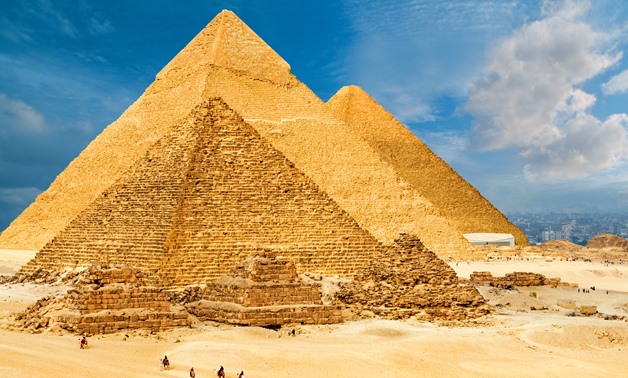
Pyramids of Giza - Egypt Today
For over 200 years, researchers and scientists have been debating what lies in the middle of the massive Pyramids of Giza, unable to see what is inside. But a new void uncovered by an international scientific mission in early November might lay down the first piece in the puzzle, the mission’s scientists revealed.
“This is definitely the discovery of the century. There have been many hypotheses about the pyramid, but no one even imagined that such a big void is located above the Grand Gallery,” archaeologist and Egyptologist Yukinori Kawae told National Geographic.
At least 100 feet long (30.5 meters) and located above the Grand Gallery linking Khufu’s burial chamber to a tunnel leading out, this discovery marks the first ever major structure found in the pyramids since the 1800s, the scientists assert. Highlighting the importance of the new findings, Salima Ikram, a professor of Egyptology at the American University in Cairo and author of several books on Egyptian archeology, tells Egypt Today that it “might help explain how the pyramid was build.”
The hidden cavity was discovered by a scientific mission that was launched on October 25, 2015 under the name of the “ScanPyramids” project. According to official statements, the mission aimed to “probe the heart of the largest pyramids of Egypt,without drilling the slightest opening.”
Under the authority of the Egyptian Ministry of Antiquities, and in collaboration with the Faculty of Engineering of Cairo University and the French Heritage Innovation Preservation Institute (HIP), the project uses an imaging technique called muon radiography and subatomic particle scans to identify any possible cavities hidden in the
pyramids.
“Just because a mystery is 4,500 years old doesn’t mean it can’t be solved,” the mission’s video teaser states. Co-founder of the ScanPyramids project and president of HPI Mehdi Tayoubi explained in a press conference that the purpose of the uncovered void remains unclear. “Researchers are cautiously avoiding the word ‘chamber’ for the time being.
What we do know is that this void is there, that it is impressive, and that it was not expected by any kind of theory,” he stated. Ikram explains that the void’s purpose may have been a functional one. “Possibly, the void was used for manipulating blocks, as well as providing a way in and out of the pyramid during its construction,” she says.
However, it is still unclear whether the cavity played any role in construction.The plane-sized void is believed to be completely locked away from the known passages of the pyramid, which lead to the three main chambers: the Grand Gallery, the King’s Chamber and the Queen’s. Although it is still unclear whether this void is a chamber
or even a corridor, the measurements show it has similar dimensions to the Grand Valley.
Controversial, even 4,500 years later
Although the discovery has brought about various hopes and speculations in local and
international news, some experts still doubt how far such a discovery could take us in
resolving the mystery of the pyramid, affirming that it calls for further investigations.In a statement released early November, head of the government’s antiquities council Mustafa Waziri criticized the announcement of the discovery, explaining that it raises
more questions than those answers and that further investigations must be conducted.
 Zahi Hawass - Egypt Today
Zahi Hawass - Egypt Today
“The project has to proceed in a scientific way that follows the steps of scientific research and its discussion before publication,” he said.Archaeologist and head of the science committee overseeing the project Zahi Hawass even denied there was any “new discovery.” Scientists from Scan Pyramids “showed us their conclusions and we
informed them this is not a discovery,” he said in a statement to Agence France Presse
(AFP).
“The pyramid is full of voids and that does not mean there is a secret chamber or a new discovery,” Hawass added. As a renowned Egyptologist who has worked on several archaeological projects herself, Ikram believes that future plans following such a dazzling discovery will definitely include further studies and a deeper understanding of all three pyramids.
 Salima Ikram - Egypt Today
Salima Ikram - Egypt Today
“I doubt that, in this generation, anyone will obtain access to the void, unless there is some way of teleporting into it without damaging the structure,” Ikram adds,affirming that the scientists have only established the existence of the void, without making any allegations of its purpose, which is up to Egyptologists to uncover. The ScanPyramid mission is pursuing its work to uncover the void’s secret, continuing to “research with non-destructive techniques,” the HIP Vice-President stated in a TV interview, affirming they will not be “drilling bore holes into the void.”
Whether the “big void” is a chamber, a passage or just an empty space, using advanced technology to find out more about it is perhaps a discovery in itself, a tool that will keep revealing more about the secrets of our ancestors, their ancient construction techniques and how they built pyramids to last.

Comments
Leave a Comment